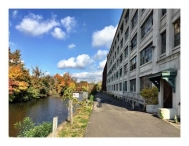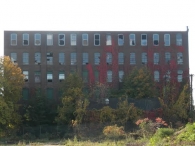Mill Record Windsor Locks
RETURN TO ‘FIND MILLS’Disclaimer: Content for these properties was compiled in 2014-2017 from a variety of sources and is subject to change. Updates are occasionally made under Property Information, however the Connecticut Trust for Historic Preservation (dba Preservation Connecticut) makes no representation or warranty that the information is complete or up-to-date.
- Complex Name (Common)
- Montgomery, J. R., and Company Industrial Complex
- Complex Name (Historic)
-
- Montgomery, J. R., and Company Industrial Complex
- Address or Location
- Canal Bank , Windsor Locks
- County
- Hartford
- Historic Designation
- Associated Mill Community
- n/a
- Historic Information
Companies Associated w/Complex
- J. R. Montgomery & Company 1881-1989
Use (Historic)
Largest Documented Workforce
500 c.1920
Historic Narrative
National Register listing 1/2017 J. R. Montgomery and Company was founded in 1871 as a cotton spinning mill, and moved to the Canal Bank site in 1881. The mill produced yarns for sale to weaving mills, and became known for its “novelty fillings,” which twisted together strands of different material to produce unusual texture. The firm also developed a process for creating threads of silver or gold metal. Known as tinsel thread, starting in 1905 it became sought after for telecommunications for its conductivity. Demand for metallic threads after World War I led to the company’s expansion and construction of the reinforced concrete buildings. As the demand for metallic thread grew, the company stopped spinning its core textile threads, buying them from others, and concentrated on drawing its own wire. The metallic thread was used in applications ranging from military trimmings to electric razors, radar to pacemakers, computers to industrial meshes. After World War II, Montgomery produced vacuum metalized plastic film thread for weaving. The machinery used at the factory allowed for the longest continuous wire/thread for the most efficient twisting. By the late 1980s, the firm was no longer competitive in its Windsor Locks location and sold to German investors who moved operations to a new factory in New Hampshire. The northernmost building was used by Fuller Russell Tobacco Co. in the 20th century for sorting and shredding tobacco. To the north of the extant J. R. Montgomery complex was a group of ten buildings dating from c.1864 to 1977. These structures, now gone, were occupied by, among others, E. Horton and Con Co., makers of chucks, and later Crouse-Hinds Co., manufacturers of airport lighting. When they moved out, Montgomery purchased the buildings, which all succumbed to fires and neglect over the years.
- Architectural Information
Number of Existing Buildings
Four (4) primary blocks.
Dates of Construction
c.1893, 1904, 1920, 1939
Architect
n/a
Builder
n/a
Building Type
Architectural Description
The complex is comprised of three main buildings: the oldest at the northern end is a 5-story brick building dating to c.1893; at the center is a c.1904 5-story brick building; and the southernmost building is reinforced concrete constructed c.1920. A two-story reinforced concrete outbuilding sits along the river side, and a c.1939 single story brick addition is to the rear of the central mill. Windows of the concrete buildings are industrial steel sash. The brick buildings have heavy timber framing, and the center building has round-arched openings and projecting piers. The concrete buildings were designed by Buck and Sheldon of Hartford, and have mushroom (Turner) columns.
Exterior Material(s)
Structural System(s)
Roof Form
Roof Material
Power Source
Condition
Good, Fair, Deteriorated
Condition Notes
n/a
- Property Information
-
Specific Location
1.13 acre parcel roughly bounded by the Connecticut River to the east, Farmington Canal and Conrail tracks to the west, Bridge St. to the south and E. end of Grove St to the north.
Adjacent To
Exterior Visible from Public Road?
Yes
Parcel ID / Assessor Record Link
- 29/19/1 / Link →
Acreage
1.13
Use (Present)
- Other: Residential redev by Beacon Communities Development completed 2020
- Residential
- Sources
-
Form Completed By
Renée Tribert
Date
September 2016
Bibliography
- National Register nomination form.
- Roth, Matthew, et al, Connecticut: An Inventory of Historic Engineering and Industrial Sites (Washington DC: SIA, 1981).
- Representative View(s)Click on image to view full file







